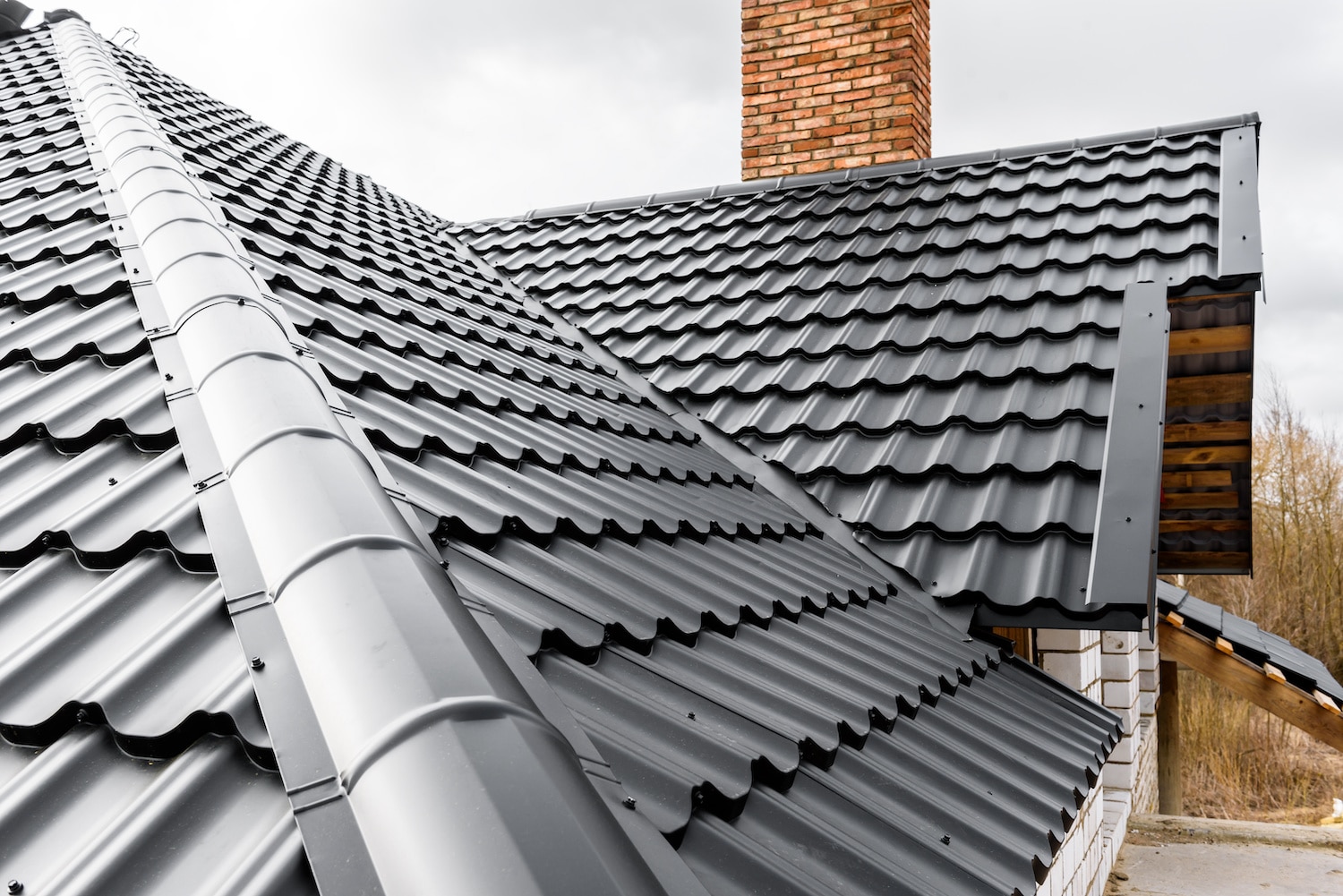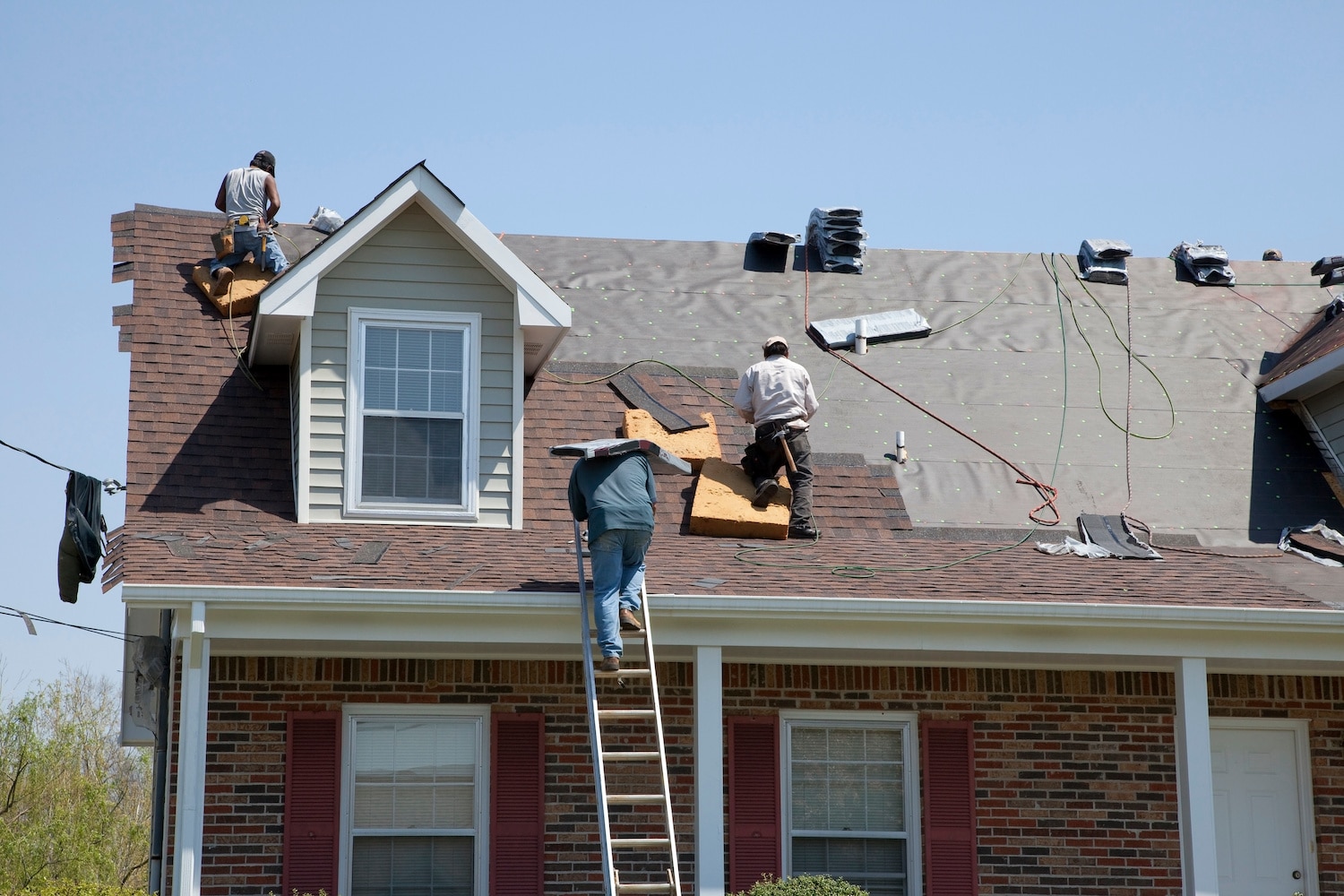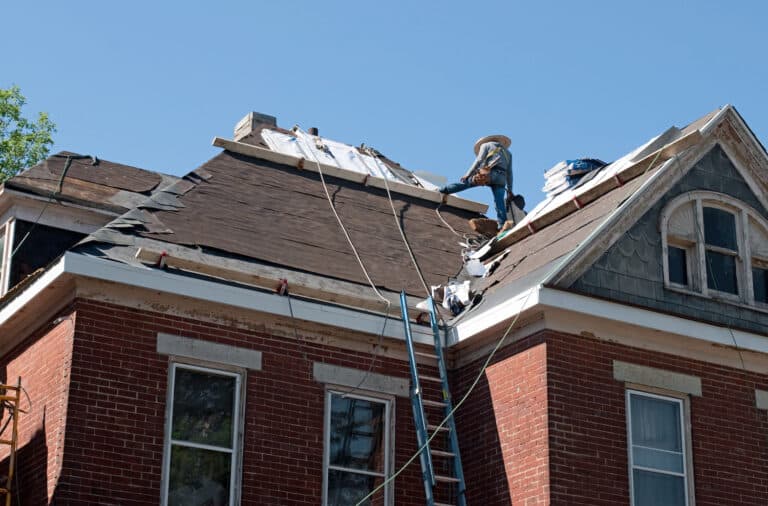6 Tips For Replacing Your Roof (Beginner’s Guide)
Your home is one of your most prized possession. Plus, it can also be an excellent investment. Your roof is an essential part of your house. Your roof is what provides your shelter, can increase your property value, and keeps out the rain and other severe weather conditions.
Deciding to replace your roof is a significant decision, and you shouldn’t make it lightly. The decision to replace a roof inspires a lot of anxiety and nervousness in homeowners. It’s often a costly and labor-intensive process that can disrupt your schedule.
With this list of roof replacement tips, we help you ensure that your roof replacement is done the correct way. These tips will also maximize the benefit of your new roof and prevent future problems.
1. Don’t Just Cover Up the Problem
One of the most frequent mistakes people make is covering old leaky roofs with new shingles. Adding another layer of asphalt shingles is cheaper than removing the old ones, but unfortunately, it often misses the structural problems that exist underneath them.
When you’re getting your roof replaced, be sure to take the time to have the old roofing material removed. Removing the old roofing materials will allow you to inspect the roof deck and make any necessary repairs.
Removing the old roofing material is also essential because it can weigh down your new roof and shorten its lifespan.
2. Focus on Value
One of the most crucial roof replacement tips is to focus on value instead of the overall cost. Finding the least expensive option or contractor and running with it can be tempting. Unfortunately, this will likely cause you to have to repair the roof sooner.

High-quality Materials
Instead, focus on finding an option that is high-quality and will last a long time. High-quality materials will save you money in the long run because you won’t have to replace the roof as often. It’s better to buy high-quality new shingles, gutters, and flashings once, rather than multiple times.
To find a material that offers a good value, look for one with a warranty of at least 25 years. It would help if you also look for Energy Star certified roofing materials. Energy-efficient materials will help you save money on your energy bills through better insulation.
3. Keep Your Crawl Space Well Ventilated
Poor ventilation is a common mistake that many homeowners make during a home roof replacement and installation. Instead of keeping the attic ventilated, they opt to have it sealed. Sealing your roof may seem like an excellent way to protect your home from rain, snow, and other forms of precipitation.
But, this isn’t necessarily the case. When your roof is not well ventilated, it can cause problems with the roofing materials. The material can warp and degrade over time. Damage to the materials will shorten the lifespan of your roof and cause you to have to repair it.
Additionally, a poorly ventilated crawl space or attic will make it challenging to keep your home cool in the summer. Hot air will collect; since it can’t escape, the heat will bleed into other parts of your home. Trapped hot air can lead to substantial electricity costs and uncomfortable living conditions.
To avoid this, be sure to keep your roof well-ventilated. Keeping your home well-ventilated will not only make you more comfortable, but it will also prevent water damage and mold buildup.
4. Choose Your Contractor Carefully
One of the most critical roof replacement suggestions is to make sure you hire a professional roofing contractor or roofing company. Replacing your roof is a big undertaking. A roofer will know how to properly install the roofing replacement and have the necessary experience to do a good job.
How To Choose the Right Contractor or Roofing Company
It’s wise to ask people you trust for recommendations to find a roofing contractor. You can also look online for reviews of roofers in your area. Once you have a few contractors you’re considering, be sure to ask them for references. Follow up with the references and ask them about their experience with the roofer.
You should ensure that the roofer you hire is licensed and insured. Insurance will protect you should an accident occur during the roof replacement.

5. Clear the Work Zone
Before work starts on your roofing project, you must clear the work zone around your house. A clear workspace is necessary for safety concerns and for keeping your belongings safe.
Be sure to move any patio furniture, grills, or toys out of the way. You should also remove any loose items that the wind could blow around. If you have any fragile items inside your house, move them to a safe location.
It’s also a good idea to cover any windows or doors close to the work zone. Covering the windows will keep them safe from the old roof, old asphalt shingles, and tar paper.
Finally, leaving your car parked in the garage or on the street may be a good idea. Leaving it parked in the driveway runs the risk of it being hit by falling debris.
Cleaning the workspace is one of the most crucial tips. Don’t forget to take care of your other belongings while repairing your roof.
6. Warn the Neighbors
You’ll also want to ensure you have all the necessary permits and have a conversation with your neighbors about the project. Before construction starts on your roof, tell your neighbors and let them know the timeline of the project. This common courtesy will generate goodwill. Additionally, they will appreciate the heads up so they can plan accordingly.
It’s also wise to let them know if there will be any loud noises or debris associated with the roof replacement. If so, be sure to apologize in advance.
Wrapping Up
These roof replacement tips will ensure you’re ready to repair your home in the best way possible. When considering a roof replacement, do your research and hire the best contractor in your area.
While the installation will be costly, you should think of it as an investment that will make your home safer and increase your property’s value. Following these suggestions can help make this undertaking easier and less stress-inducing.





